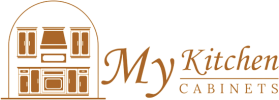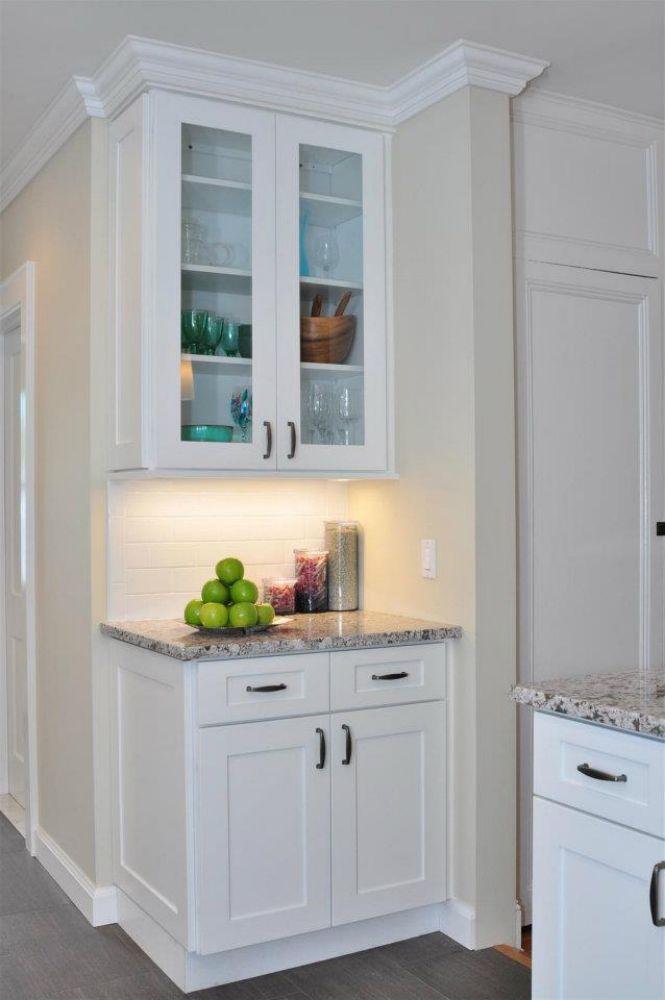Smart Financing for a Beautiful Kitchen: How to Afford New Kitchen Cabinets
Investing in a kitchen remodel is one of the most rewarding upgrades a homeowner can make. A beautiful, functional kitchen not only enhances your daily living experience but also increases your home’s overall value. However, the cost of new kitchen cabinets can often be a significant portion of that investment—sometimes accounting for up to 40–50% of a total kitchen renovation budget.
Because cabinetry is such a substantial expense, many homeowners explore financing options to make their dream kitchen more affordable without compromising on quality or design. The good news is that there are several practical ways to finance your new cabinets, from low-interest personal loans to in-house payment plans.
In this comprehensive guide by My Kitchen Cabinets, we’ll break down the most effective ways to finance new kitchen cabinets, how to compare options, and strategies for managing costs responsibly—so you can achieve the kitchen you’ve always wanted without straining your budget.
Understanding the True Cost of Kitchen Cabinets
Before exploring financing, it’s important to understand the total cost of your project. The price of kitchen cabinets depends on several factors including material, style, customization level, and installation complexity.
Average Cabinet Cost Breakdown:
-
Stock Cabinets: $100–$400 per linear foot.
-
Semi-Custom Cabinets: $150–$650 per linear foot.
-
Custom Cabinets: $500–$1,200 per linear foot or more.
Beyond the cabinets themselves, also consider:
-
Hardware and accessories (pulls, hinges, organizers).
-
Installation and labor costs.
-
Countertops and backsplash adjustments.
-
Delivery, taxes, and permits (if required).
Once you have a realistic estimate, you can explore the best financing methods to match your budget and timeline.
Why Financing Kitchen Cabinets Can Be a Smart Move
Paying upfront for kitchen renovations isn’t always feasible. Financing allows homeowners to complete their remodel without draining savings or delaying necessary improvements.
Benefits of Financing:
-
Immediate installation: Enjoy your new kitchen sooner rather than saving for years.
-
Predictable payments: Structured plans make budgeting easier.
-
Preserved savings: Keep your emergency funds intact.
-
Potential ROI: A new kitchen can increase property value and appeal to future buyers.
Financing isn’t just about affordability—it’s about strategic money management. When done wisely, it helps homeowners achieve their dream kitchen without sacrificing financial stability.
Exploring the Best Ways to Finance New Kitchen Cabinets
There’s no one-size-fits-all approach to financing a kitchen remodel. Your best option depends on your credit score, project size, and long-term financial goals. Let’s explore the top financing options available to homeowners.
Personal Loans
A personal loan is one of the most common ways to finance new kitchen cabinets. These loans are unsecured, meaning you don’t need to use your home as collateral.
Advantages:
-
Fixed interest rates and predictable monthly payments.
-
Quick approval and funding—often within a few days.
-
Flexible usage for both cabinets and related renovation expenses.
Considerations:
-
Interest rates depend on credit score and income.
-
Shorter repayment terms may lead to higher monthly payments.
Personal loans are ideal for moderate kitchen projects when you want straightforward terms and a fixed repayment schedule.
Home Equity Loans
If you have significant equity built up in your home, a home equity loan allows you to borrow against that value at a relatively low interest rate.
Advantages:
-
Lower interest rates compared to unsecured loans.
-
Fixed monthly payments for predictable budgeting.
-
Interest may be tax-deductible if used for home improvements.
Considerations:
-
Your home serves as collateral—missed payments could risk foreclosure.
-
Closing costs may apply.
This option is best suited for homeowners with strong equity and confidence in their ability to make consistent payments.
Home Equity Line of Credit (HELOC)
A HELOC functions similarly to a credit card, allowing you to draw funds as needed within a specific limit. This flexibility can be ideal if your project’s exact costs are uncertain.
Advantages:
-
Pay interest only on what you borrow.
-
Revolving line of credit allows multiple withdrawals during renovation.
-
Often features lower interest rates than credit cards.
Considerations:
-
Variable interest rates can fluctuate over time.
-
Requires discipline to avoid over-borrowing.
A HELOC is excellent for phased remodels or homeowners who anticipate making payments gradually as work progresses.
In-House Financing Through Cabinet Dealers
Some kitchen cabinet companies—including My Kitchen Cabinets—offer in-house financing or partner with third-party lenders to help customers spread payments over time.
Advantages:
-
Simplified process—apply directly through your dealer.
-
May include low or zero-interest promotional offers.
-
Convenient for bundling design, purchase, and installation costs.
Considerations:
-
Approval depends on credit score and income verification.
-
Promotional rates may revert to higher rates after the introductory period.
In-house financing is often one of the most convenient solutions since it keeps everything—from selection to payment—under one roof.
Credit Cards
Using a credit card for new kitchen cabinets can be a quick and flexible option, especially if you’re planning a smaller purchase or can pay off the balance quickly.
Advantages:
-
Easy application and immediate access to funds.
-
Potential for cashback or reward points.
-
Ideal for short-term financing or gap coverage.
Considerations:
-
High interest rates if balances aren’t paid in full.
-
Large purchases may affect credit utilization and score.
If you can take advantage of a 0% introductory APR card and pay off your cabinets during the promotional period, this can be a cost-effective short-term financing strategy.
Government-Backed Home Improvement Loans
Certain government programs help homeowners finance renovations that enhance their property value or energy efficiency.
Examples Include:
-
FHA Title I Loans: For small to mid-size home improvements, including cabinetry upgrades.
-
Fannie Mae HomeStyle Loan: Rolls renovation costs into your mortgage at competitive rates.
These loans offer regulated terms and may be easier to qualify for than conventional loans. However, the application process can be lengthy and requires detailed documentation.
Refinancing Your Mortgage
If you’re already considering refinancing, rolling your kitchen renovation into your new mortgage can provide a lower overall interest rate.
Advantages:
-
Combines your home improvement cost with your primary loan.
-
May reduce monthly payments due to extended loan terms.
-
Lower interest rates compared to personal loans or credit cards.
Considerations:
-
Extends the term of your mortgage.
-
Closing costs and appraisal fees may apply.
Mortgage refinancing is best for homeowners planning major remodels and looking to take advantage of lower interest rates.
Contractor or Builder Financing
Some remodeling companies or contractors partner with lenders to offer flexible payment options for complete kitchen remodels, including cabinetry.
Advantages:
-
Convenient, one-stop financing for labor and materials.
-
Often includes competitive interest rates and installment plans.
Considerations:
-
Always verify contractor reputation and lender terms.
-
May require down payments or upfront approval.
Before signing, review loan documents carefully to ensure there are no hidden fees or unfavorable terms.
Combination Financing
For larger remodels, some homeowners combine financing sources—for example, using a small personal loan alongside a 0% credit card promotion for part of the expenses.
This hybrid approach can help balance immediate affordability with long-term cost control, provided you manage multiple repayment schedules responsibly.
Tips for Choosing the Best Financing Option
Selecting the right financing method depends on your financial situation and project goals. Use these strategies to make the most informed decision:
1. Assess Your Budget and Credit Health
Check your credit score before applying; higher scores qualify for better interest rates. Create a detailed project budget, including installation and possible contingencies.
2. Compare Interest Rates and Terms
Always compare APRs, repayment terms, and total cost of borrowing. A lower monthly payment might mean paying more interest over time.
3. Avoid Over-Borrowing
Borrow only what you need to complete your project comfortably. Remember to leave financial flexibility for future expenses or emergencies.
4. Ask About Promotional Offers
Dealers like My Kitchen Cabinets often partner with financing providers to offer limited-time 0% APR or deferred interest plans. Take advantage of these when possible.
5. Read the Fine Print Carefully
Before signing, ensure you understand all fees, prepayment penalties, and variable interest rate clauses. Transparency from both the lender and dealer is key.
The Role of Kitchen Cabinet ROI in Financing Decisions
Cabinets aren’t just a purchase—they’re an investment. A well-designed, high-quality kitchen can recoup up to 70–80% of its cost in added resale value.
When financing, keep ROI in mind:
-
Quality cabinets last longer and maintain appeal.
-
Timeless styles attract buyers more than trendy designs.
-
Durable materials reduce future maintenance costs.
A smart financing plan ensures you enjoy both aesthetic satisfaction and financial benefit from your investment.
Using My Kitchen Cabinets’ Financing Support
At My Kitchen Cabinets, we understand that affordability plays a key role in turning your dream kitchen into reality. That’s why we offer flexible financing solutions through trusted lending partners.
Our team can:
-
Help you compare financing options based on your budget.
-
Provide itemized quotes and transparent pricing.
-
Assist with quick credit applications and approvals.
-
Offer promotional plans with low or zero-interest terms (subject to eligibility).
Whether you’re upgrading a single space or remodeling the entire kitchen, we make it simple to find a plan that works for your financial comfort and design goals.
Managing Repayments Responsibly
Once financing is secured, managing repayments wisely will help you protect your credit and maintain peace of mind.
Best Practices:
-
Set up automatic payments to avoid missed due dates.
-
Track total project spending with a dedicated budget app or spreadsheet.
-
Consider making extra payments when possible to reduce interest costs.
-
Avoid taking on additional debt during repayment.
Responsible management ensures that your beautiful new kitchen remains a source of pride—not financial stress.
Conclusion
Financing your dream kitchen doesn’t have to feel overwhelming. From personal loans to dealer-backed payment plans, there are multiple ways to make high-quality kitchen cabinets affordable and accessible. The key lies in choosing the right financing option for your budget, understanding the terms, and working with a trusted partner like My Kitchen Cabinets to guide you through the process.
By evaluating your financial situation carefully, comparing offers, and prioritizing value-driven choices, you can transform your kitchen confidently—enjoying both functional beauty and financial flexibility.
At My Kitchen Cabinets, our mission is to make your kitchen renovation journey seamless and stress-free. We combine premium craftsmanship with flexible financing, ensuring that every homeowner can create the kitchen they love without compromise.
With the right financing plan in place, your dream kitchen is closer than you think—beautiful, efficient, and built to last for years to come.
FAQs
1. What is the most affordable way to finance kitchen cabinets?
The most affordable option depends on your credit and budget. Home equity loans or 0% promotional financing through dealers often offer the lowest rates.
2. Can I finance my kitchen cabinets directly through My Kitchen Cabinets?
Yes. My Kitchen Cabinets partners with financing providers to offer flexible payment plans, including low-interest or promotional no-interest options for qualified buyers.
3. Is it better to pay for cabinets upfront or finance them?
If you have sufficient savings and won’t deplete your emergency funds, paying upfront saves on interest. Otherwise, financing allows you to spread costs without delay.
4. Will financing kitchen cabinets affect my credit score?
Applying for loans or credit lines may cause a temporary dip in your score, but consistent on-time payments can improve your credit over time.
5. How long do typical financing terms last?
Most cabinet financing plans range from 6 months to 10 years, depending on the lender, loan type, and total amount financed.
Read: How do I choose eco-friendly kitchen cabinets for a sustainable home?
Read: How do I pick the right hardware finish to match kitchen cabinets?+

